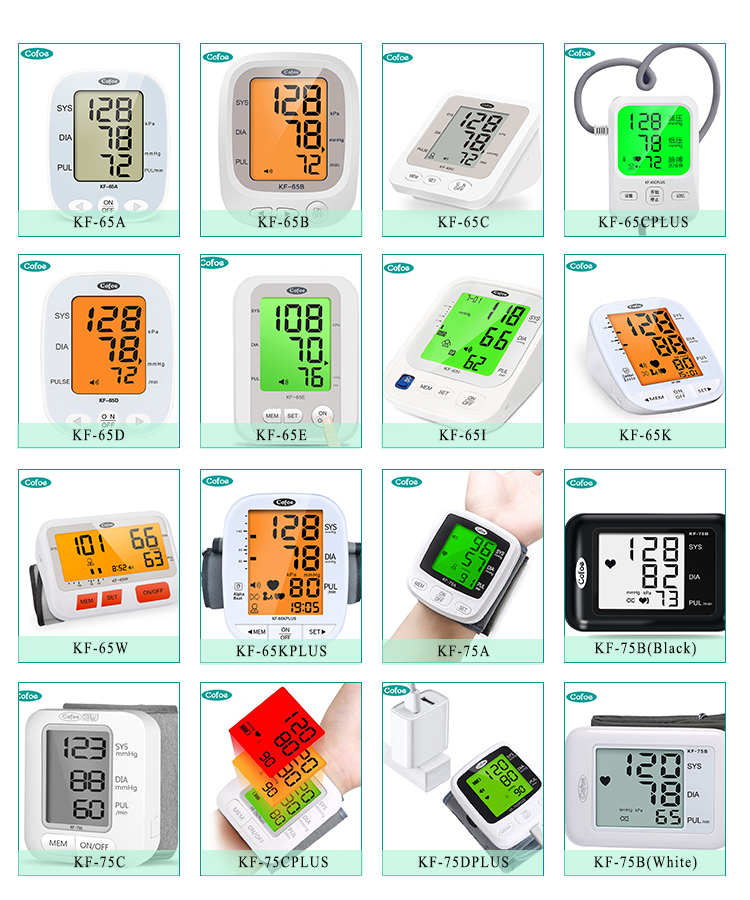Views: 0 Author: Site Editor Publish Time: 2023-05-31 Origin: Site
Blood pressure monitor is a medical instrument used to measure human blood pressure, which has a wide range of clinical applications. This article will discuss the application of blood pressure monitors from the basic principles, methods of use, common blood pressure problems, and future development trends.
I. Basic Principles of Blood Pressure Monitors
The basic principle of blood pressure monitors is to use the method of pneumatic measurement to monitor human blood pressure. It consists of an arm cuff, a pressure bulb, an indicator, and an air valve. The arm cuff surrounds the patient's upper arm, and the pressure bulb is connected to the arm cuff through a hose. When inflating the bulb, the pressure inside the arm cuff will also increase until the pressure inside the cuff exceeds the patient's systolic pressure. At this time, the blood vessels will be obstructed due to compression, and then the pressure bulb is released. When the pressure drops below the patient's diastolic pressure, the blood vessels become unobstructed. At this time, the pressure value on the arm cuff is recorded, which is the value of the patient's systolic and diastolic pressures.
II. Methods of Using Blood Pressure Monitors
Before using the blood pressure monitor, the patient should remain calm and sit comfortably in a stable chair, and relax themselves.
Then wrap the arm cuff around the upper arm, and ensure that its position is correct. Usually, the lower edge of the cuff is about 1-2 cm away from the elbow joint, and the center point of the cuff is aligned with the upper edge of the lateral condyle of the humerus.
Inflate the pressure bulb to the designated pressure at an appropriate speed, usually 120 mmHg.
When the pressure inside the cuff drops below the patient's diastolic pressure, the patient will feel that the pressure bulb has been deflated, and the value on the blood pressure monitor is read at this point.
If multiple measurements or data recording are required, wait for a period of time before measuring again.
III. Common Blood Pressure Problems
High blood pressure and low blood pressure are two parameters commonly used to describe blood pressure. High blood pressure generally refers to systolic pressure above 140 mmHg or diastolic pressure above 90 mmHg, while low blood pressure refers to systolic pressure below 90 mmHg or diastolic pressure below 60 mmHg. In the long term, high blood pressure can cause damage to the cardiovascular system, brain, and other organs, while low blood pressure may lead to symptoms such as dizziness and fainting.
IV. Future Development Trends
Traditional blood pressure monitors have been in existence for many years, but their use is still relatively limited. With the development of technology, more advanced wireless blood pressure monitors have emerged, which can be connected to smartphones and have more functions. These intelligent blood pressure monitors usually have data storage, tracking, chart analysis, and other functions, making it easy for doctors and patients to access and control patient blood pressure data.
In conclusion, as an essential tool in clinical medicine, blood pressure monitors have a wide range of applications in the medical field. Although it is now the 21st century, and technology is constantly updating, the blood pressure monitor, as an ancient medical instrument, remains an important tool for maintaining human health. It is hoped that there will be more technological and market innovations in the future, making greater contributions to the cause of human health.
